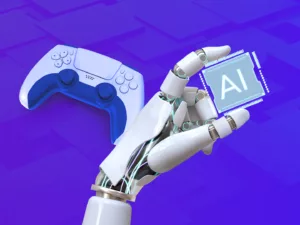In virtually any organization where continuous learning and improvement are priorities, there will eventually be a need to organize learning and training using a Learning Management System (LMS). In short, an LMS provides the platform that a trainer needs to create learning content, distribute lessons, and assess lesson effectiveness and learner performance.

At 5CA, we create and distribute training content for our global workforce, working across time zones, regions, and for a wide variety of clients and departments. Having the right LMS in place means that, with a relatively small team in place, we’re able to cater to the learning needs of our entire organization.
In this blog, I’m happy to share some of the best practices that I’ve picked up over the years. At 5ca, we use Lessonly as our platform of choice, but these tips apply to any LMS. Let’s dive in:
1. There’s no substitute for solid content
Having a learning management system in place is all good and well, but whether your training is online, face-to-face, or a combination of both, the success of your training program still stands or falls with the quality of your content.
2. Utilize the content you already have
As a trainer, chances are you’re always under pressure to create more content. You’ll often find yourself creating training that somewhat similar to – but not exactly the same as – a training that you’ve prepared before. Before starting from scratch and creating a new training, check if you can’t make your life a little easier by adapting a training you or another trainer in your organization has created in the past. The fact that you can collaborate with other content creators across your company can save you a lot of time.
3. Involve your organization’s subject matter experts
Not to belabor my first point too much, but content quality really is critical. I’m willing to bet your organization has plenty of subject matter experts that would be happy to review your lesson and offer just that final bit of tweaking that takes it from good to great. Asking for a second, third, or even fourth pair of eyes on your training goes a long way.
4. Get all the feedback you can
The only way to improve your training is to get feedback. Most learning management systems will have a feedback function built in to keep track of how learners rate the quality of your lessons, but feedback doesn’t stop there. Make sure to ask for it in meetings and get different perspectives from both your learners and your management alike.
5. Leverage QA insights to train proactively
The goal of any trainer is ultimately to improve their learners’ skills and performance. In customer support, this means training agents to enable them to provide customers with the right information, within a short amount of time, while using their soft skills to make for a pleasant interaction. Work closely with your QA team to find the areas where training can help to improve soft skills, technical knowledge or proficiency with tools and be proactive in providing training to those agents that could benefit from it.
6. Templates are your best friend
When it comes to creating training, there’s no reason to reinvent the wheel every time. Use templates for your lesson structure, to introduce lessons, set expectations, and wrap up trainings. Not only will this make it easier to build your lessons, but it will also help you create a familiar lesson flow that your learners can get comfortable with, so they can focus fully on the content without being distracted by your LMSS interface or mechanics.
At 5CA, we aim to stimulate organic learning where anyone can learn or train at any time. By following these tips and practices, we’re better able to manage our lessons and learning content across all teams and departments, while creating a learning environment that’s accessible and inviting for our people.








